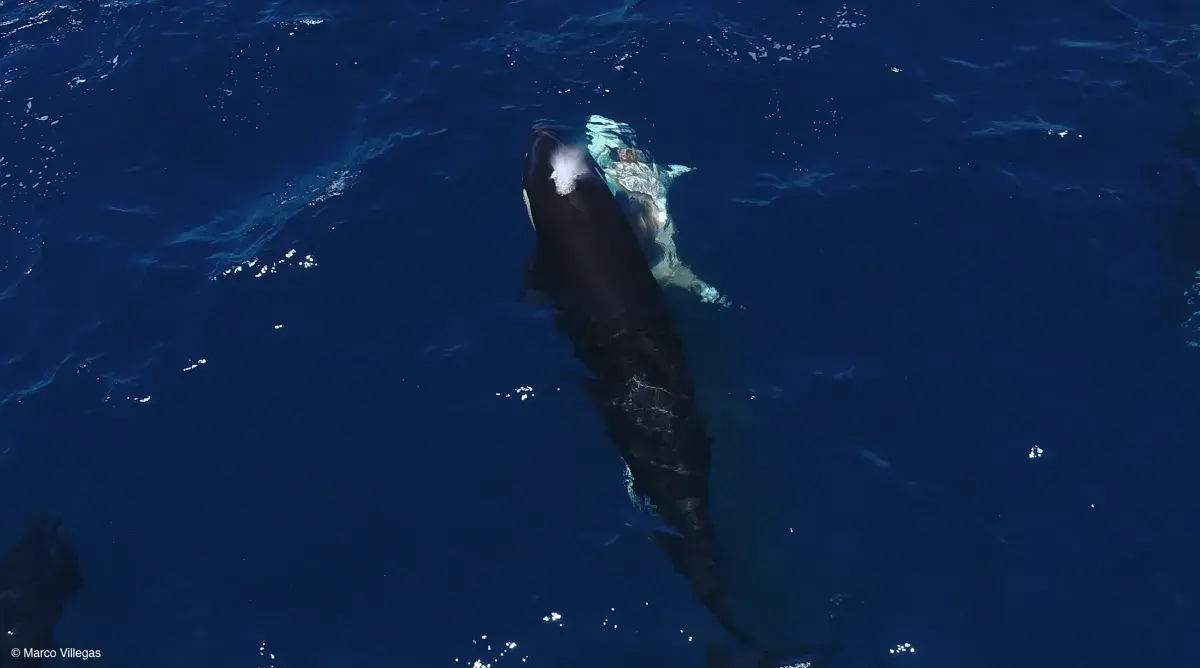
The orca is called the killer whale for a reason—and nothing demonstrates why quite like a recent scientific discovery about deadly encounters between orcas and young great white sharks.
A pod of orca whales in the Gulf of California has been observed using a calculated and brutal hunting strategy to target and kill their unforunate great white victims.
The killer whales have been documented repeatedly flipping the young sharks upside-down—which induces in them a state of paralysis—before ripping out their nutrient-rich livers.
According to the study, published in the journal Frontiers in Marine Science, these observations suggest that orcas may be hunting great white sharks more often than previously understood.
Orcas are the only known predator of the great white shark, and prior documentation of this behavior was limited to hunts targetting larger sharks off of the coast of South Africa.
The Paralysis Trick
Researchers spotted two separate hunts, which resulted in the death of three juvenile white sharks, during routine monitoring of the orca pod in the Gulf of California.
The group—known as “Moctezuma’s pod” after a prominent member—was seen using a similar, coordinated technique in both 2020 and 2022.
Key to their attack is how they turn the sharks onto their back, a technique that induces a temporary state known as tonic immobility, effectively paralyzing the fish.
“This temporary state renders the shark defenseless, allowing the orcas to extract its nutrient-rich liver and likely consume other organs as well, before abandoning the rest of the carcass,” explained paper author and marine biologist Erick Higuera Rivas in a statement.
During the hunts, multiple orcas worked together to push the young white shark to the surface, where the prey was then flipped over. The whales would then reappear with only the shark’s liver in their mouths.
The scientists hypothesize that this tactic minimizes the chances of the orcas being bitten.
Targeting Naive Juveniles
Researchers suspect that this pod of orcas could be exploiting a nearby shark nursery—allowing them to prey on smaller, less experienced white sharks who may not have learned the necessary anti-predator responses needed to survive an attack.
“This is the first time we are seeing orcas repeatedly target juvenile white sharks,” said paper author and marine ecologist Salvador Jorgensen of the California State University in a statement.
Jorgensen explains the difference between the reactions of adult and juvenile great whites: “Adult white sharks react quickly to hunting orcas, completely evacuating their seasonal gathering areas and not returning for months. But these juvenile white sharks may be naive to orcas. We just don’t know yet whether white shark anti-predator flight responses are instinctual or need to be learned.”
Moctezuma’s pod has previously been observed hunting rays, as well as bull and whale sharks—suggesting that they have developed their technique through learned experience.
“I believe that orcas that eat elasmobranchs—sharks and rays—could eat a great white shark, if they wanted to, anywhere they went looking for one,” said Higuera Rivas.
Rivas sees the complex technique as a “testament to orcas’ advanced intelligence, strategic thinking and sophisticated social learning, as the hunting techniques are passed down through generations within their pods.”
Do you have a tip on a science story that Newsweek should be covering? Do you have a question about killer whales? Let us know via science@newsweek.com.
Reference
Higuera-Rivas, J. E., Pancaldi, F., Jorgensen, S. J., & Hoyos-Padilla, E. M. (2025). Novel evidence of interaction between killer whales (Orcinus orca) and juvenile white sharks (Carcharodon carcharias) in the Gulf of California, Mexico. Frontiers in Marine Science, 12. https://doi.org/10.3389/fmars.2025.1667683
